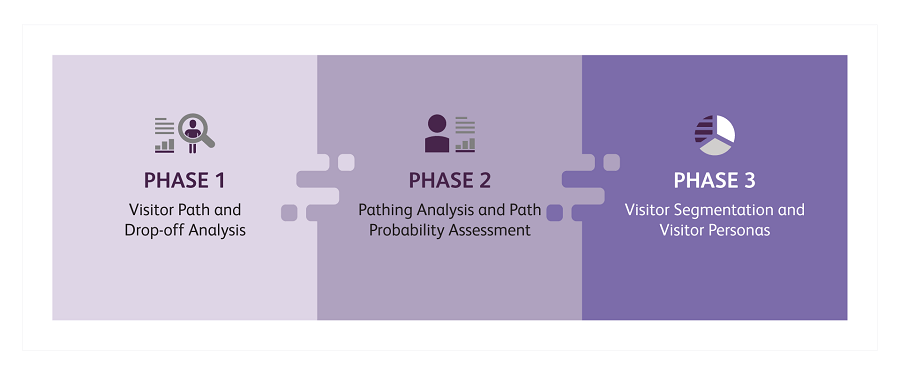The Challenge
As customer behavior changes, websites are becoming the first line of interaction between prospective customers and organizations. Since the Covid-19 outbreak, consumer-sentiment surveys have shown a significant increase in online sales across the globe and in conversion rates. From scaled-up digital activities (such as ordering groceries/ medicine or purchasing furniture for the home office) to changing customer purchasing behavior (like, buyers in the 60+ age group being a high value segment for CPG or B2B buyers using online research to heavily inform purchasing decisions)—it’s a new world!
More and more organizations are starting to think of ways to improve their websites by scrutinizing user journey/ experience and content (Images, Page Layout, Scroll Depth)—as websites are becoming one of the most potent tool for sales enablement. A global heavy-equipment manufacturer wanted to understand their website visitor’s behavior by mapping the visitor journey so that they could optimize web content, marketing initiatives and improve overall visitor experience.
Our Solution
Our team proposed a three-phased approach in order to help the client understand their visitors and increase their conversion rates.
Phase one:
The Visitor Path indicates where visitors entered and exited, which pages visitors looked at, and the length of time visitors stayed on specific web pages. By tracking the movement of visitors across pages, the client was able to spot specific elements of their website that were effective or ineffective.
The Drop-off Analysis highlighted the pages where visitors dropped off, especially if a large volume of visitors dropped off at the same page. This signaled to the client-specific pages that needed to be prioritized and optimized, i.e. create engaging content.
Phase two:
Pathing Analysis determines the sequence of pages a visitor frequents prior to the desired event. This analysis was performed by aggregating the paths taken before the desired event (conversion) by descending frequency of use. This highlighted specific features to the client that either encouraged the desired result or paths that would lead to dead-ends on the site – this is one of the key inputs to optimizing the site experience for your potential buyer.
Path Probability Assessment divided website visitors into specific segments based on paths that they have taken previously. This helped the client see what the probability that a specific visitor segment would take a certain path. If that probability was low, then the client could start exploring ways they could increase that probability.
Phase three:
Visitor Segmentation lets the client understand the behavior of specific visitor groups. Our team segmented visitors based on inputs from the previous phases. Then, we drew suggestions for the client based on observations about the segmented visitors.
Visitor Persona indicates the type of visitor based on intent. For example, visitors can be placed in the categories of explorers (less likely to purchase), potential buyers (medium likely to purchase), and serious buyers (most likely to purchase). This allowed the client to find ways to appeal to specific visitor personas – this analysis was the first step taken by the client towards site personalization!
Business Impact
The client found that these insights helped them get closer to their goal of pushing potential buyers towards conversion, while continuing to improve their overall website and find new opportunities – more importantly, a vital signal in their journey towards building personalized experiences for their visitors/ potential buyers.
Highlight challenging pages
where visitors had trouble navigating, or had a negative experience.
Target visitor segments
with opportunities sized-up in the form of a Tableau dashboard for continuous monitoring.
Focus on paths
that showed a high probability for conversion, and find ways to get visitors onto the path.
Talk to One of Our Experts
Get in touch today to find out about how Evalueserve can help you improve your processes, making you better, faster and more efficient.
